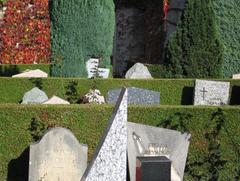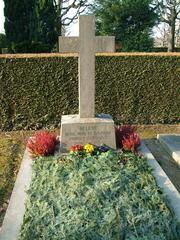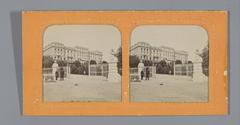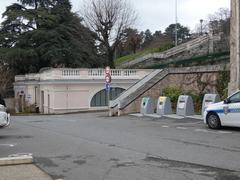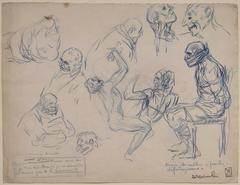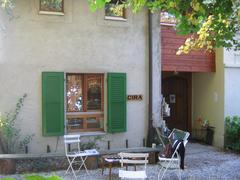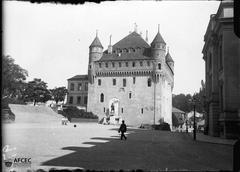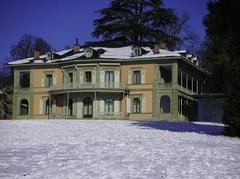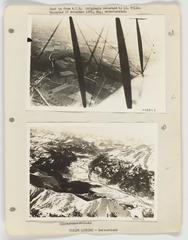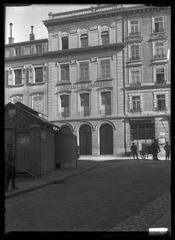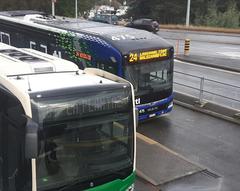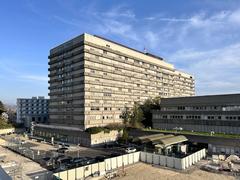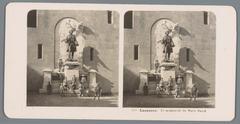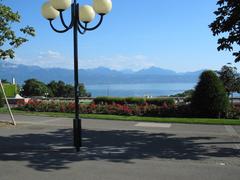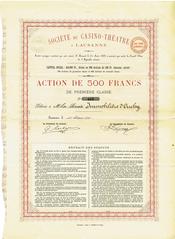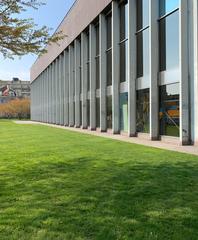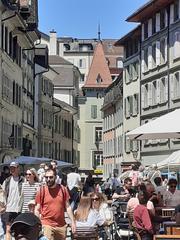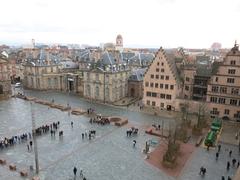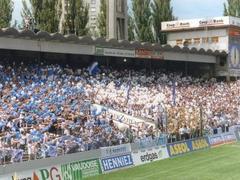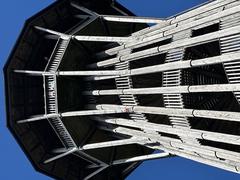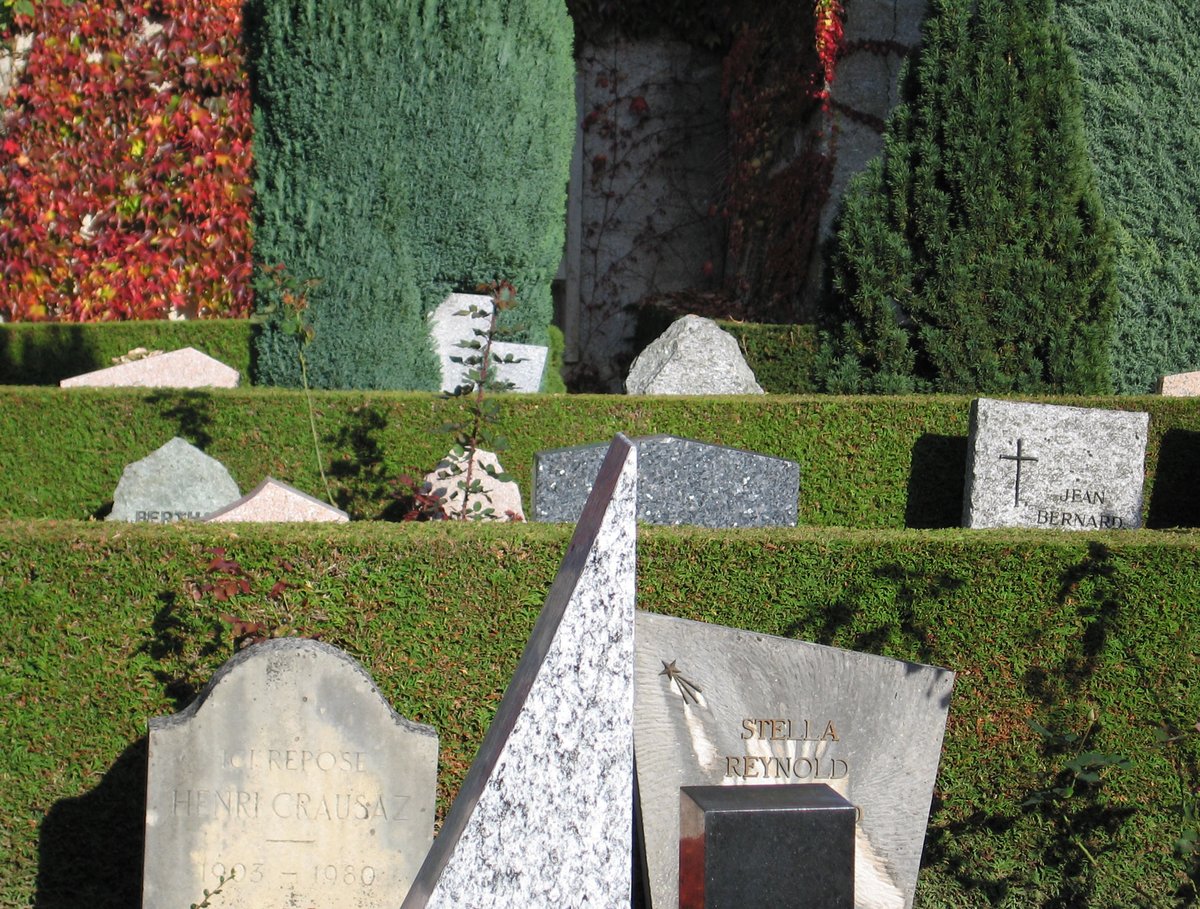
Bois-De-Vaux Cemetery: Visiting Hours, Tickets, and Historical Guide
Date: 15/06/2025
Introduction
Nestled in the southern part of Lausanne, Switzerland, Bois-De-Vaux Cemetery stands as a testament to the city’s cultural, architectural, and historical heritage. As Lausanne’s largest and most renowned burial ground, Bois-De-Vaux is much more than a cemetery—it is a landscaped urban park, an open-air museum of funerary art, and a site of quiet reflection. Designed by Swiss architect Alphonse Laverrière in the early 20th century, the cemetery embodies the ideals of the garden cemetery movement, offering both solemnity and public accessibility.
Bois-De-Vaux is internationally recognized for its architectural features, botanical diversity, and as the final resting place of notable figures including Coco Chanel, Pierre de Coubertin (founder of the modern Olympic Games), and Eugène Viollet-le-Duc. Its tree-lined avenues, tranquil water features, and diverse memorials reflect Lausanne’s cosmopolitan history and social fabric, including a dedicated Muslim confessional section.
This comprehensive guide covers everything you need to plan a meaningful visit to Bois-De-Vaux Cemetery: visiting hours, entrance fees, accessibility, transportation, notable memorials, and practical tips. Whether you are drawn by its history, artistic gravestones, or peaceful landscapes, the cemetery offers an experience deeply rooted in Lausanne’s identity. For official visitor information, see the City of Lausanne and MyVaud.
Historical Origins and Architectural Vision
From Rural Estate to Urban Landmark
The land now occupied by Bois-De-Vaux Cemetery was originally a rural estate dating back to the 17th century. Notable for early archaeological discoveries, including Roman artifacts, the site evolved through successive ownerships and architectural transformations, culminating in its purchase by the city of Lausanne in 1916 as urban expansion necessitated a modern burial ground (Wikipedia).
Alphonse Laverrière’s Masterplan
Swiss architect Alphonse Laverrière envisioned a cemetery that would serve both as a dignified necropolis and a peaceful public park. From 1922 to 1951, he developed a masterplan characterized by broad, tree-lined avenues, symmetrical layouts, tranquil water features, and artistic monuments. Laverrière’s design draws on classical motifs and local materials, resulting in a harmonious blend of architecture and nature (Evendo).
Landscape and Botanical Features
Covering approximately 18–20 hectares, Bois-De-Vaux is laid out with geometric harmony. Key elements include:
- Double rows of linden trees along central avenues
- Cypresses symbolizing mourning
- Water basins and ponds with water lilies for contemplation
- Meticulously maintained hedges and seasonal flower beds
The landscape design offers year-round beauty, from spring blossoms to autumn foliage, making the cemetery both a botanical and cultural destination (myvaud.ch).
Cultural and Historical Significance
Notable Burials
Bois-De-Vaux is the final resting place for many figures of international and local significance, reflecting Lausanne’s cosmopolitan legacy:
- Coco Chanel: Legendary French fashion designer; her simple grave is adorned with white flowers and five lions, her astrological symbol.
- Pierre de Coubertin: Founder of the modern Olympic Games; his grave highlights Lausanne’s Olympic heritage.
- Eugène Viollet-le-Duc: Renowned French architect and restorer of Notre-Dame de Paris.
- Paul Robert: Influential French lexicographer.
- Victor Desarzens: Founder of the Lausanne Chamber Orchestra.
- Vince Taylor: British rock singer and cultural inspiration.
These memorials, alongside those of local dignitaries and artists, offer insight into the city’s history and evolving funerary customs (Wikipedia; myvaud.ch).
Artistic and Architectural Memorials
The cemetery’s tombs and monuments are masterpieces of funerary art, featuring:
- Intricate sculptures and engravings
- Mausoleums reflecting diverse historical styles
- Personalized memorials that narrate stories of Lausanne’s citizens
Laverrière’s restrained monumentalism and use of local stone evoke timelessness and dignity (24heures.ch).
Inclusivity and the Muslim Confessional Section
Since 2016, a dedicated Muslim section has accommodated up to 350 graves, oriented toward Mecca in accordance with Islamic tradition. This area reflects Lausanne’s respect for cultural diversity and is available to Muslims residing in the canton of Vaud for at least five years.
Practical Visitor Information
Visiting Hours
- Daily: 8:00 AM to 6:00 PM
- Summer (approx. May–September): Extended to 8:00 PM
- Always check the official site for seasonal updates.
Entry Fees and Tickets
- Admission: Free of charge
- Tickets: Not required
Accessibility
- Wheelchair Accessibility: Main avenues are paved and gently graded
- Restrooms: Accessible facilities near the main entrance
- Seating: Benches throughout for rest and reflection
Getting There
- Public Transport: Bus lines 1, 6, and 25 stop near the cemetery (myvaud.ch)
- By Car: Parking available nearby, though limited on weekends
- Main Entrance: Route de Chavannes 2, Lausanne
Guided Tours and Events
- Guided Tours: Occasionally offered by Lausanne Tourisme and the city’s cultural department (Lausanne Tourism)
- Special Events: Commemorations and cultural walks, especially on All Saints’ Day—check local listings for details
Visitor Etiquette
- Maintain quiet and respectful behavior
- Photography is allowed, but remain discreet near mourners or ceremonies
- Maps are available at the entrance to help navigate the grounds
Enhancing Your Visit
Seasonal Highlights
- Spring: Blossoming trees and vibrant flower beds
- Summer: Lush greenery and cool shade
- Autumn: Striking foliage colors
- Winter: Stark architectural beauty
Nearby Attractions
- Lausanne Cathedral
- Olympic Museum
- Château Saint-Maire
- Ouchy lakeside area
Combine your visit to Bois-De-Vaux with these landmarks for a fuller cultural experience in Lausanne.
Frequently Asked Questions (FAQ)
Q: What are Bois-De-Vaux Cemetery’s visiting hours?
A: Open daily from 8:00 AM to 6:00 PM; extended to 8:00 PM in summer.
Q: Is there an entrance fee?
A: No, admission is free.
Q: Are guided tours available?
A: Yes, occasionally—check with Lausanne Tourism for schedules.
Q: Is the cemetery wheelchair accessible?
A: Yes, main paths are paved and accessible.
Q: Can I take photographs?
A: Yes, but remain respectful of ceremonies and mourners.
Q: Are there special events?
A: Yes, including cultural walks and commemorations; information is posted seasonally.
Visual Gallery
[Insert high-quality images here with alt tags such as “Bois-De-Vaux Cemetery entrance in Lausanne,” “Artistic mausoleums at Bois-De-Vaux Cemetery,” and “Seasonal landscape views of Bois-De-Vaux Cemetery” to enrich the article and aid SEO.]
Conclusion
Bois-De-Vaux Cemetery is a living monument to Lausanne’s heritage, blending architectural vision, natural beauty, and cultural diversity. Whether you come to honor a famous figure, marvel at funerary art, or simply find peace among the tree-lined avenues, this iconic cemetery invites reflection and discovery. Plan your visit using this guide, and explore nearby attractions to deepen your understanding of Lausanne’s vibrant history.
For more travel tips and cultural insights, download the Audiala app, follow us on social media, and check related posts on Swiss heritage and travel.
Additional Resources and Official Links
- City of Lausanne — Bois-De-Vaux Cemetery
- MyVaud — Bois-de-Vaux Cemetery
- Lausanne Tourism
- Olympic Museum — Lausanne
- 24heures.ch: 100 Years of Bois-De-Vaux
- Wikipedia: Bois-De-Vaux Cemetery
